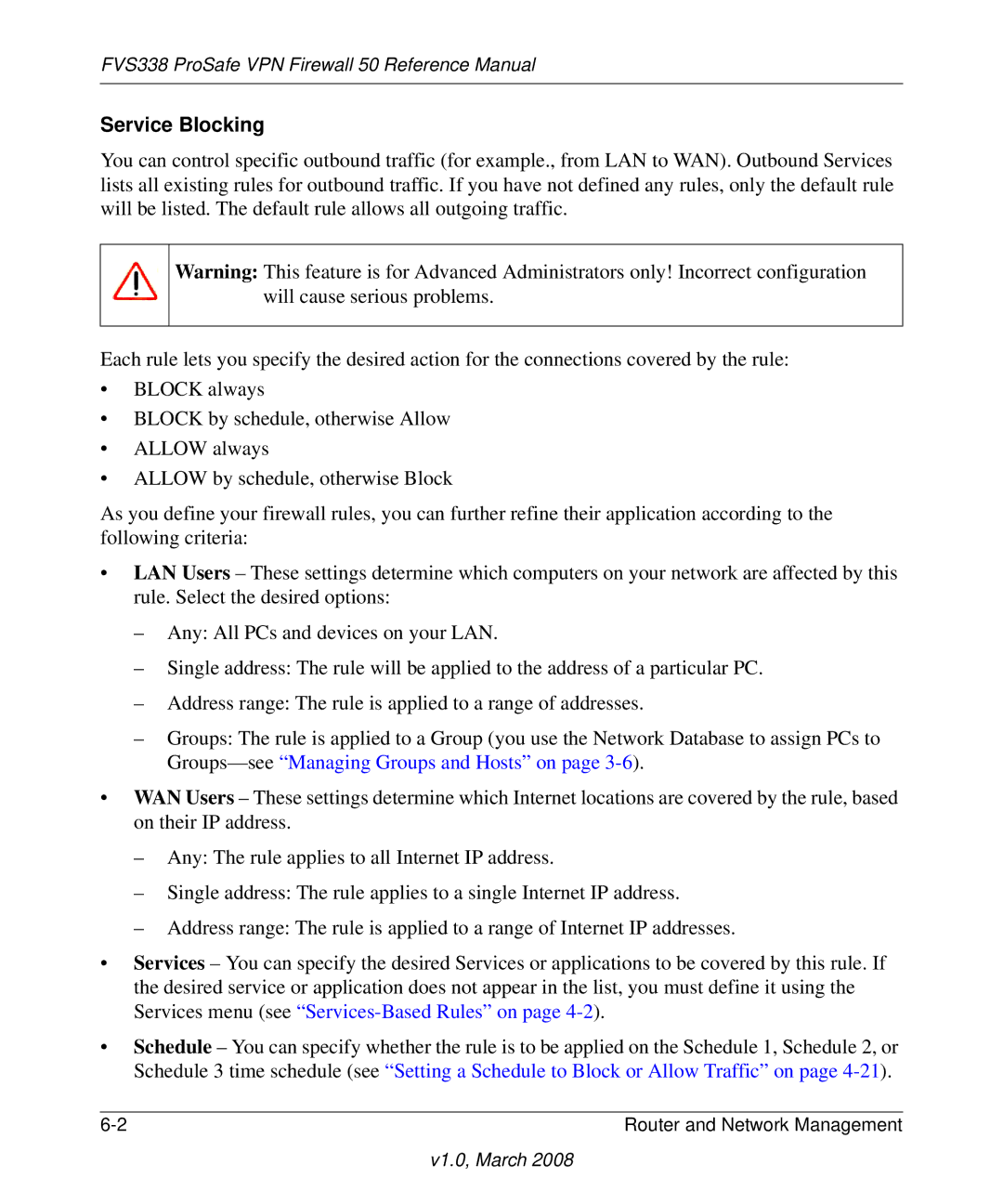
FVS338 ProSafe VPN Firewall 50 Reference Manual
Service Blocking
You can control specific outbound traffic (for example., from LAN to WAN). Outbound Services lists all existing rules for outbound traffic. If you have not defined any rules, only the default rule will be listed. The default rule allows all outgoing traffic.
Warning: This feature is for Advanced Administrators only! Incorrect configuration will cause serious problems.
Each rule lets you specify the desired action for the connections covered by the rule:
•BLOCK always
•BLOCK by schedule, otherwise Allow
•ALLOW always
•ALLOW by schedule, otherwise Block
As you define your firewall rules, you can further refine their application according to the following criteria:
•LAN Users – These settings determine which computers on your network are affected by this rule. Select the desired options:
–Any: All PCs and devices on your LAN.
–Single address: The rule will be applied to the address of a particular PC.
–Address range: The rule is applied to a range of addresses.
–Groups: The rule is applied to a Group (you use the Network Database to assign PCs to
•WAN Users – These settings determine which Internet locations are covered by the rule, based on their IP address.
–Any: The rule applies to all Internet IP address.
–Single address: The rule applies to a single Internet IP address.
–Address range: The rule is applied to a range of Internet IP addresses.
•Services – You can specify the desired Services or applications to be covered by this rule. If the desired service or application does not appear in the list, you must define it using the Services menu (see
•Schedule – You can specify whether the rule is to be applied on the Schedule 1, Schedule 2, or Schedule 3 time schedule (see “Setting a Schedule to Block or Allow Traffic” on page
Router and Network Management |
